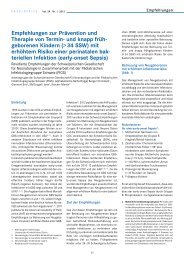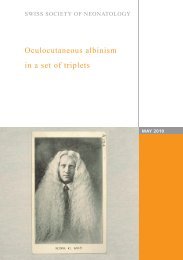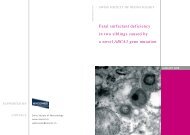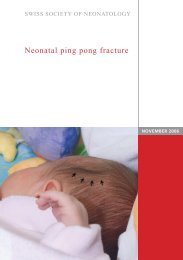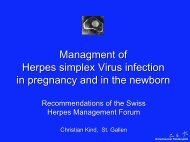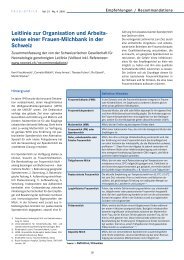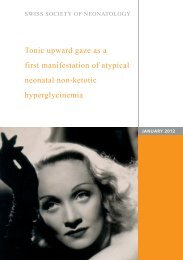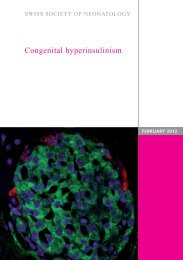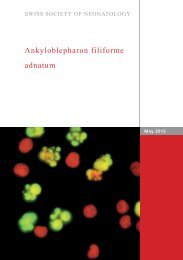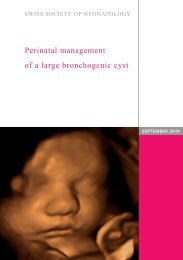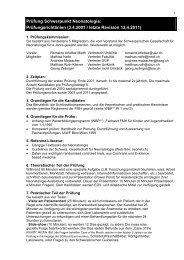Cardiomegaly in a premature neonate after venous umbilical ...
Cardiomegaly in a premature neonate after venous umbilical ...
Cardiomegaly in a premature neonate after venous umbilical ...
Create successful ePaper yourself
Turn your PDF publications into a flip-book with our unique Google optimized e-Paper software.
5<br />
me acutely symptomatic due to cardiac tamponade and<br />
deteriorated rapidly with signs of respiratory distress,<br />
cyanosis, tachycardia or bradycardia, mottled sk<strong>in</strong>, and<br />
arterial hypotension f<strong>in</strong>ally lead<strong>in</strong>g to cardiopulmonary<br />
arrest not responsive to standard <strong>in</strong>terventions ( ). No-<br />
tably, approximately a quarter of the cases were first<br />
diagnosed post-mortem at autopsy ( ). The mortality is<br />
very high ( 5-65%) ( , ) and those resuscitated success-<br />
fully improved only <strong>after</strong> emergency pericardiocentesis<br />
was performed. Analysis of the aspirated liquid usually<br />
reflected the composition of the parenteral nutrition.<br />
Follow<strong>in</strong>g a series of case reports on <strong>in</strong>fant deaths attri-<br />
buted to PICC-associated cardiac tamponade, guidel<strong>in</strong>es<br />
have been published aimed at reduc<strong>in</strong>g the risk of car-<br />
diac perforation ( -5).<br />
Contrary to PICC, the <strong>in</strong>cidence of pericardial effusion<br />
associated with UVC is unknown but case reports have<br />
documented sudden cardiovascular compromise <strong>in</strong> <strong>in</strong>-<br />
fants with UVC due to pericardial tamponade (6-8).<br />
Perforation and catheter migration are thought to occur<br />
as a result of both mechanical pressure by the catheter<br />
tip repeatedly push<strong>in</strong>g aga<strong>in</strong>st the contract<strong>in</strong>g heart<br />
wall and endocardial <strong>in</strong>jury caused by hyperosmotic pa-<br />
renteral nutrition fluids. Transmural diffusion of paren-<br />
teral nutrition fluids <strong>in</strong>to the pericardial space further<br />
contributes to the accumulation of fluid. Contrary to<br />
catheter-associated <strong>in</strong>fections and thrombosis which<br />
<strong>in</strong>crease over time, pericardial effusion may occur directly



